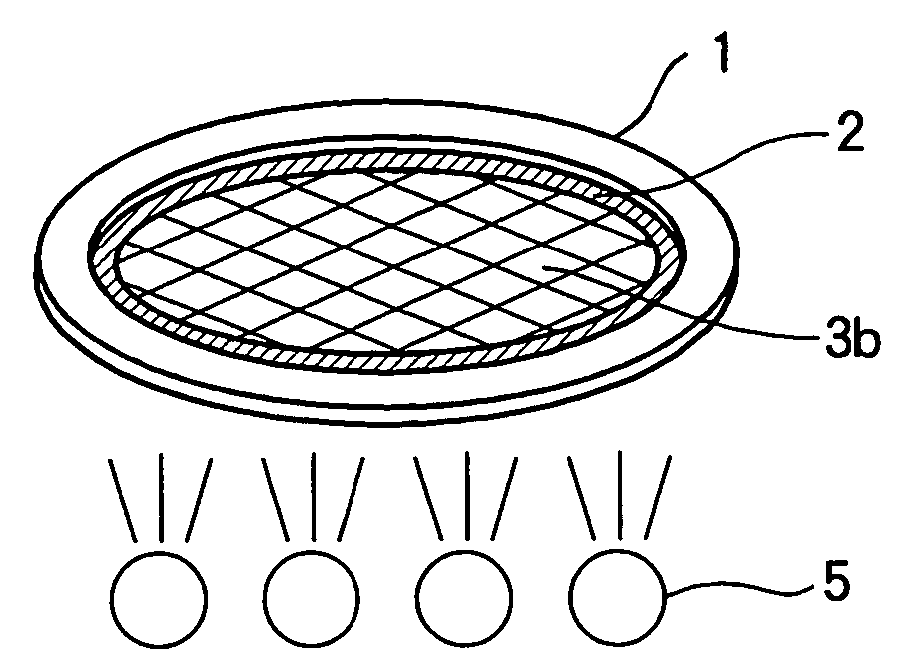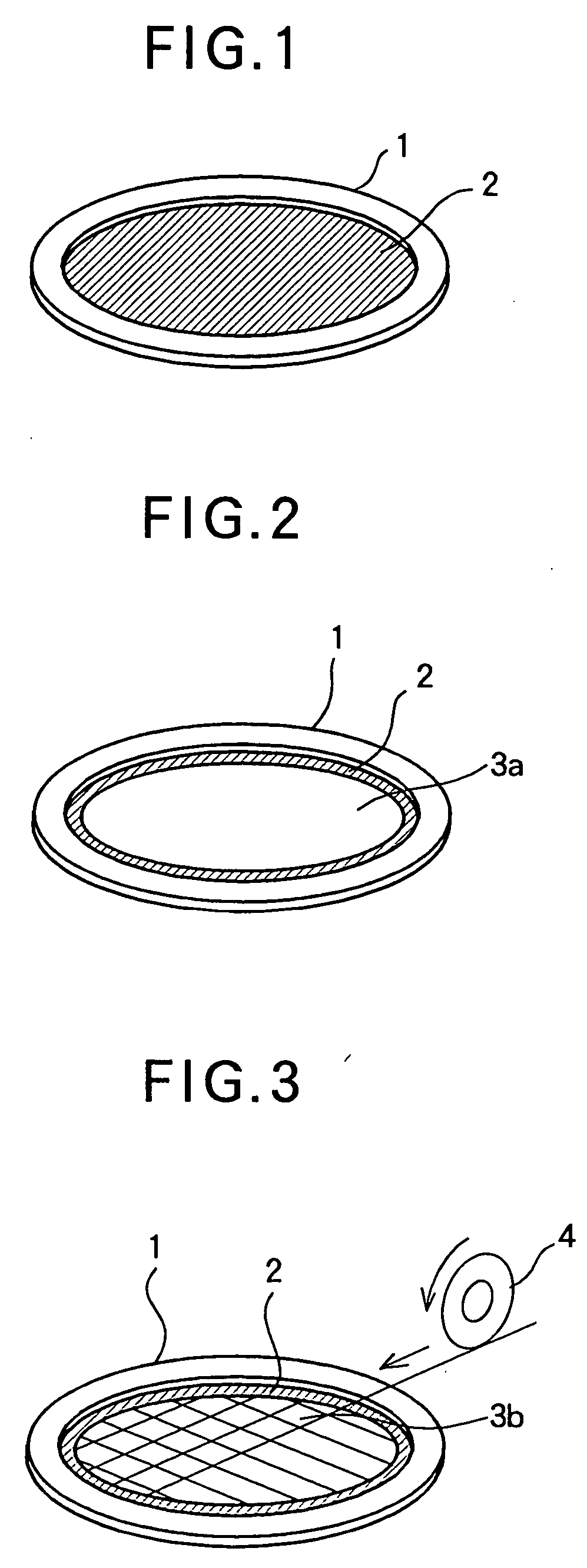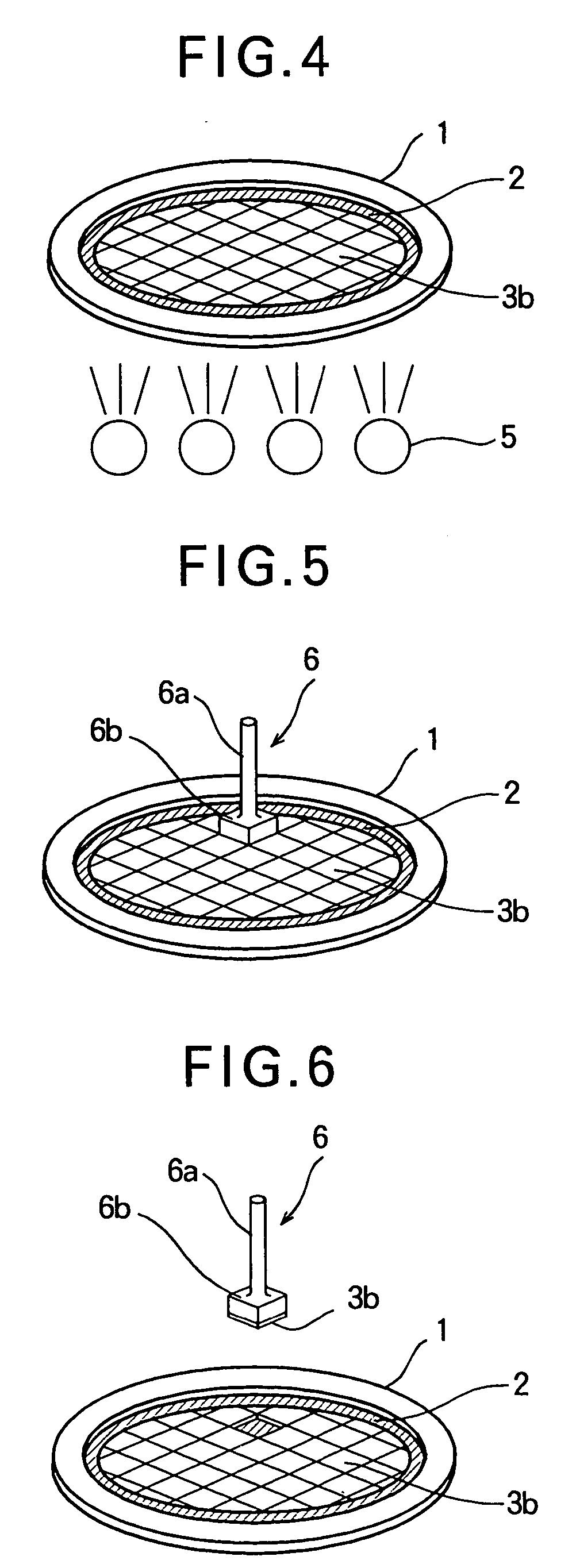Method for processing an electronic part
a technology of electronic parts and adhesives, applied in the direction of adhesive additives, lamination, electrical appliances, etc., can solve the problems of unsatisfactory releasability of electronic parts from adhesive tapes, electronic parts are likely to be damaged by impact, and large number of semiconductor wafers of today are susceptible to breakage. , to achieve the effect of excellent releasability of electronic parts
- Summary
- Abstract
- Description
- Claims
- Application Information
AI Technical Summary
Benefits of technology
Problems solved by technology
Method used
Image
Examples
example 1
In which a glycidyl azide polymer (GAP), which is a polymer having an azido group, was solely used as a gas generator compound
[0105] A glycidyl aside polymer (GAP) having a weight average molecular weight of about 2,500 and having OH groups at both terminals thereof was synthesized in accordance with a method disclosed in U.S. Pat. No. 4,268,450. The GAP was spread over a substratum to form a thin coating having a thickness of about 3 mm. On the resultant GAP coating was placed a cover glass (for microscope observation) (width and length: 18 mm×18 mm, thickness: about 0.15 mm). The GAP coating was irradiated with an ultraviolet radiation (115 V, 60 Hz, 0.16 A) by means of a UV lamp (MODEL UVGL-58, manufactured and sold by San Gabriel. U.S.A.) for about 10 minutes, wherein the irradiation was conducted from a position about 1 cm above the glass plate. As a result, a number of nitrogen gas bubbles generated from the GAP coating were observed at an interface between the glass plate an...
example 2
In which a glycidyl azide polymer (GAP), which is a polymer having an azido group, was used in combination with a compound serving as a crosslinking agent
[0106] 100 g of a glycidyl azide polymer (GAP) (having a weight average molecular weight of about 2,500 and having OH groups at both terminals thereof) synthesized in substantially the same manner as in Example 1 was placed in a mold having its surface covered with a Teflon sheet. To the GAP were added and mixed well 3.6 g of IPDI (isophorone diisocyanate) (VESTANATA IPDI, manufactured and sold by Degussa-Hals Japan Co., Ltd., Japan) and 8.7 g of TPA-100 (one product of DURANATE series, manufactured and sold by ASAHI KASRI Corporation, Japan) which is a trifunctional isocyanate and an adduct of hexamethylene diisocyanate (which IPDI and TPA-100 were used as a crosslinking agent), thereby obtaining a gas-generating, pressure-sensitive adhesive composition. The obtained gas-generating, pressure-sensitive adhesive composition was spr...
example 3
In which a glycidyl azide polymer (GAP), which is a polymer having an azido group, was used in combination with an ultraviolet-curable resin
[0110] A glycidyl azide polymer (GAP) having a weight average molecular weight of about 2,500 and having OH groups at both terminals thereof was synthesized in the same manner as in Example 1. The obtained GAP and an APR resin (photosensitive resin manufactured and sold by ASAHI KASEI Corporation, Japan, which is a polyurethane resin modified with a carboxylic acid) were mixed in a weight ratio of 1:1 to obtain a gas-generating, pressue-sensitive adhesive composition. The obtained gas-generating, pressure-sensitive adhesive composition was spread over a substratum to form a thin coating having a thickness of about 2.5 mm. On the gas-generating, pressure-sensitive adhesive composition coating was placed the same glass plate as used in Example 1 so as to adhere the glass plate to the gas-generating, pressure-sensitive adhesive composition coating...
PUM
| Property | Measurement | Unit |
|---|---|---|
| thickness | aaaaa | aaaaa |
| size | aaaaa | aaaaa |
| decomposition temperature | aaaaa | aaaaa |
Abstract
Description
Claims
Application Information
 Login to View More
Login to View More - R&D
- Intellectual Property
- Life Sciences
- Materials
- Tech Scout
- Unparalleled Data Quality
- Higher Quality Content
- 60% Fewer Hallucinations
Browse by: Latest US Patents, China's latest patents, Technical Efficacy Thesaurus, Application Domain, Technology Topic, Popular Technical Reports.
© 2025 PatSnap. All rights reserved.Legal|Privacy policy|Modern Slavery Act Transparency Statement|Sitemap|About US| Contact US: help@patsnap.com



